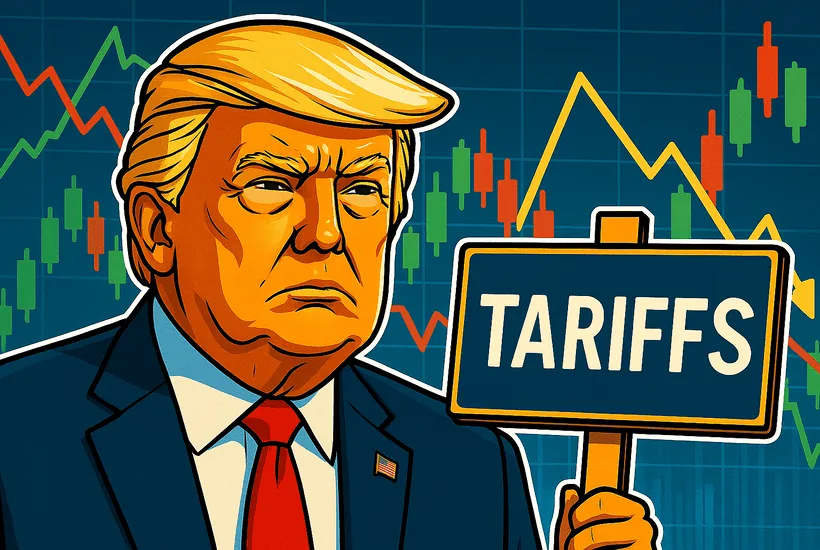- President Donald Trump shared screenshots of signed form letters dictating new tariff rates to the leaders of 14 countries.
- Trump signed an executive order to delay the date for “reciprocal” tariffs now to come into effect on August 1.
- A new set of tariffs, range from 25% to 40% and has several allies scrambling for deals.
On Monday, President Trump sent letters to leaders of 14 countries, threatening “reciprocal” tariffs ranging from 25% to 40%, with a 90‑day negotiation extension. He framed this as part of his “90 deals in 90 days” push, with the pause extended to August 1.
Imports into the United States from Japan, South Korea, Malaysia, Kazakhstan, and Tunisia will now be subject to a 25% tariff, as outlined in letters shared by Trump.
Goods from South Africa and Bosnia will incur a 30% tariff, while products from Indonesia will face a 32% import tax.
Newsletter
Get weekly updates on the newest crypto stories, case studies and tips right in your mailbox.
Items from Bangladesh and Serbia are set to be taxed at a 35% rate, and shipments from Cambodia and Thailand will be charged a 36% tariff.
According to Trump’s announcement on Truth Social, imports from Laos and Myanmar will be hit with the highest rate—a 40% duty.
The United States has already secured framework agreements with the UK, China, and Vietnam. For example, Vietnam agreed to an effective 20% tariff (and 40% on transshipped goods). The U.K. deal reduced U.S. auto tariffs to 10% from 27.5% and removed duties on aircraft engines. In late June, China and U.S. managed to come to an agreement, with tariffs on Chinese goods now set at 55%.
Markets react to new set of tariffs
Over night, U.S. stocks dropped close to a percent, with the Dow Jones shedding ~400 points, while the S&P 500 and Nasdaq both closing in the red. All three major indices witnessed their worst trading day since mid-June. Treasury yields rose, and the dollar strengthened on the back on the tariff news.
Asia-Pacific markets swung between gains and losses Tuesday as investors assessed U.S. President Donald Trump’s latest tariff threats. For most of the countries, the new U.S. tariff rates are fairly close to what they had faced after Trump announced his “liberation day” tariffs on April 2.
Cryptocurrencies didn’t move much on the back of the latest developments, with the largest token, Bitcoin, holding above $108,000 levels on Tuesday.













